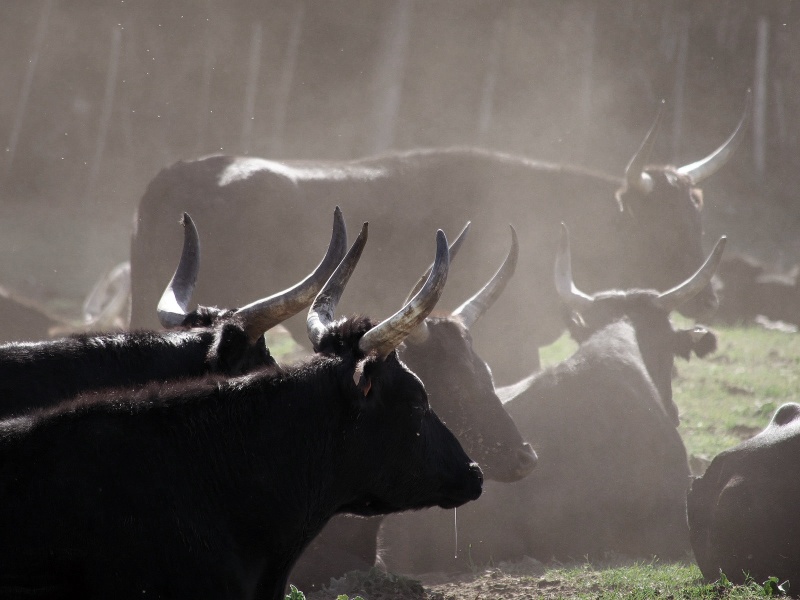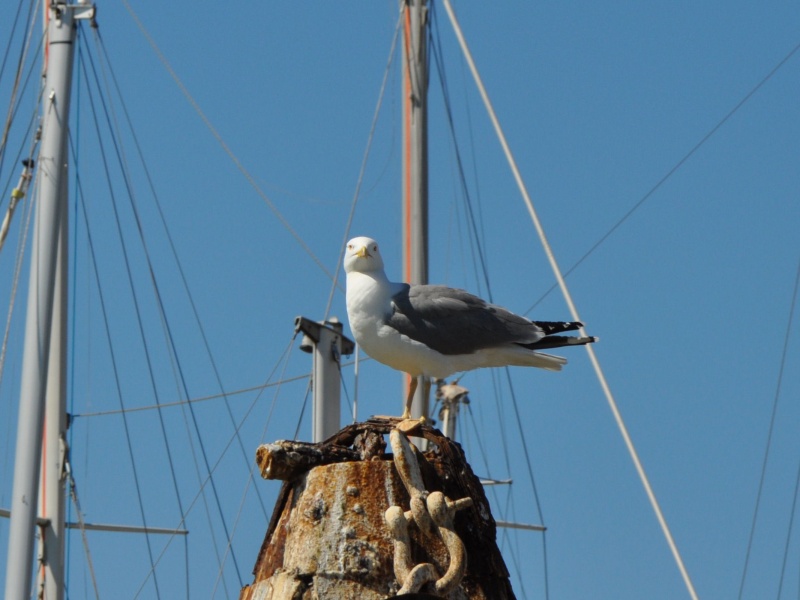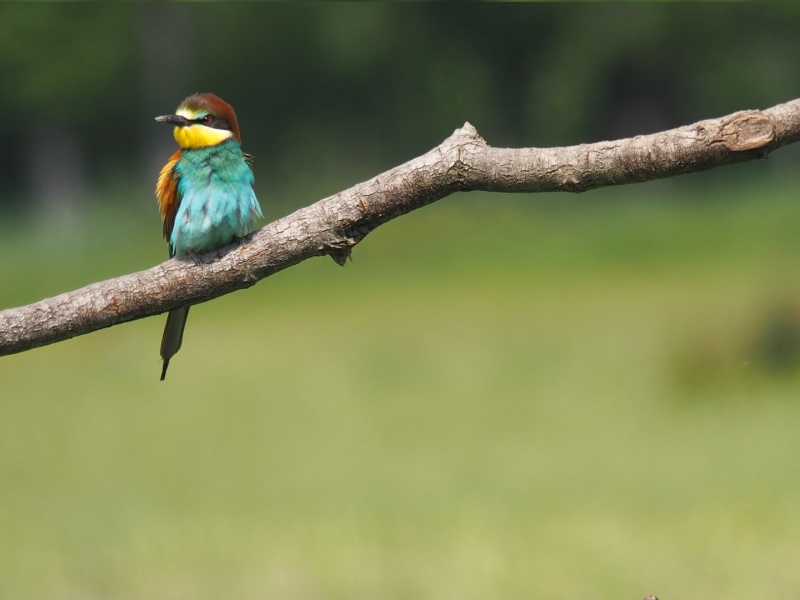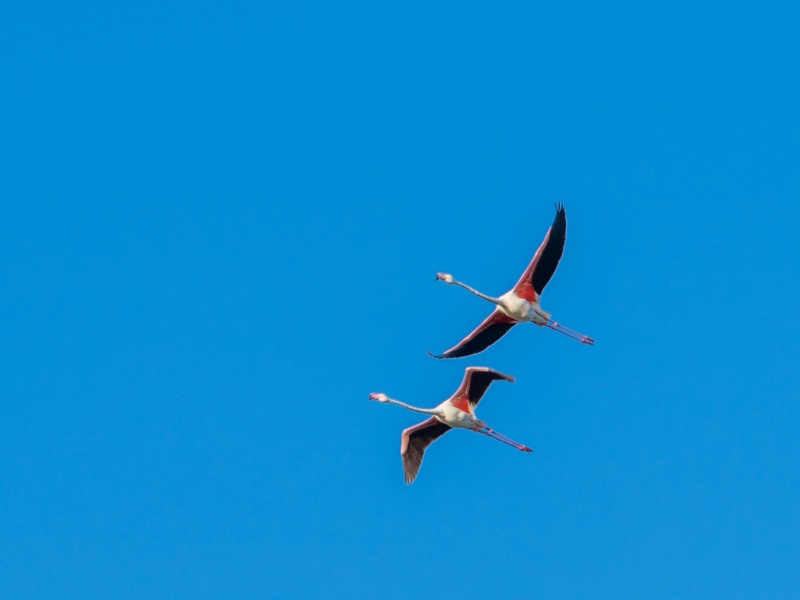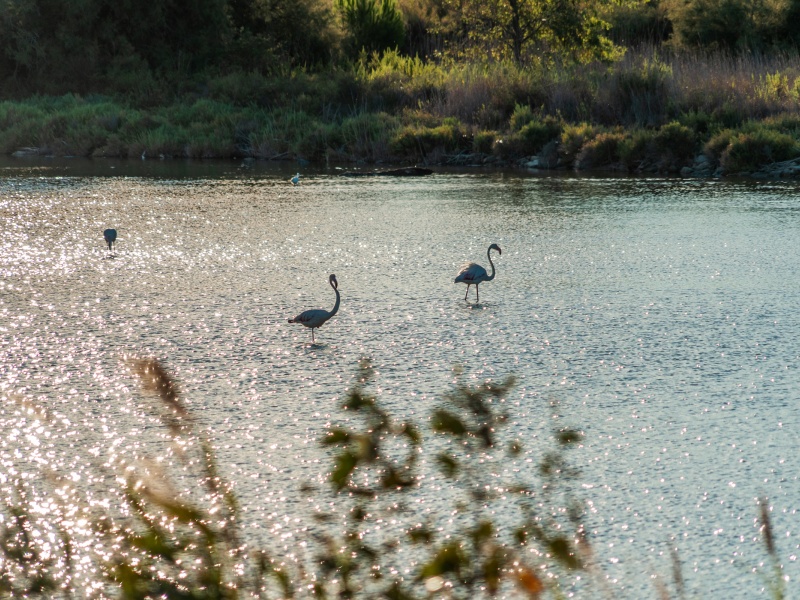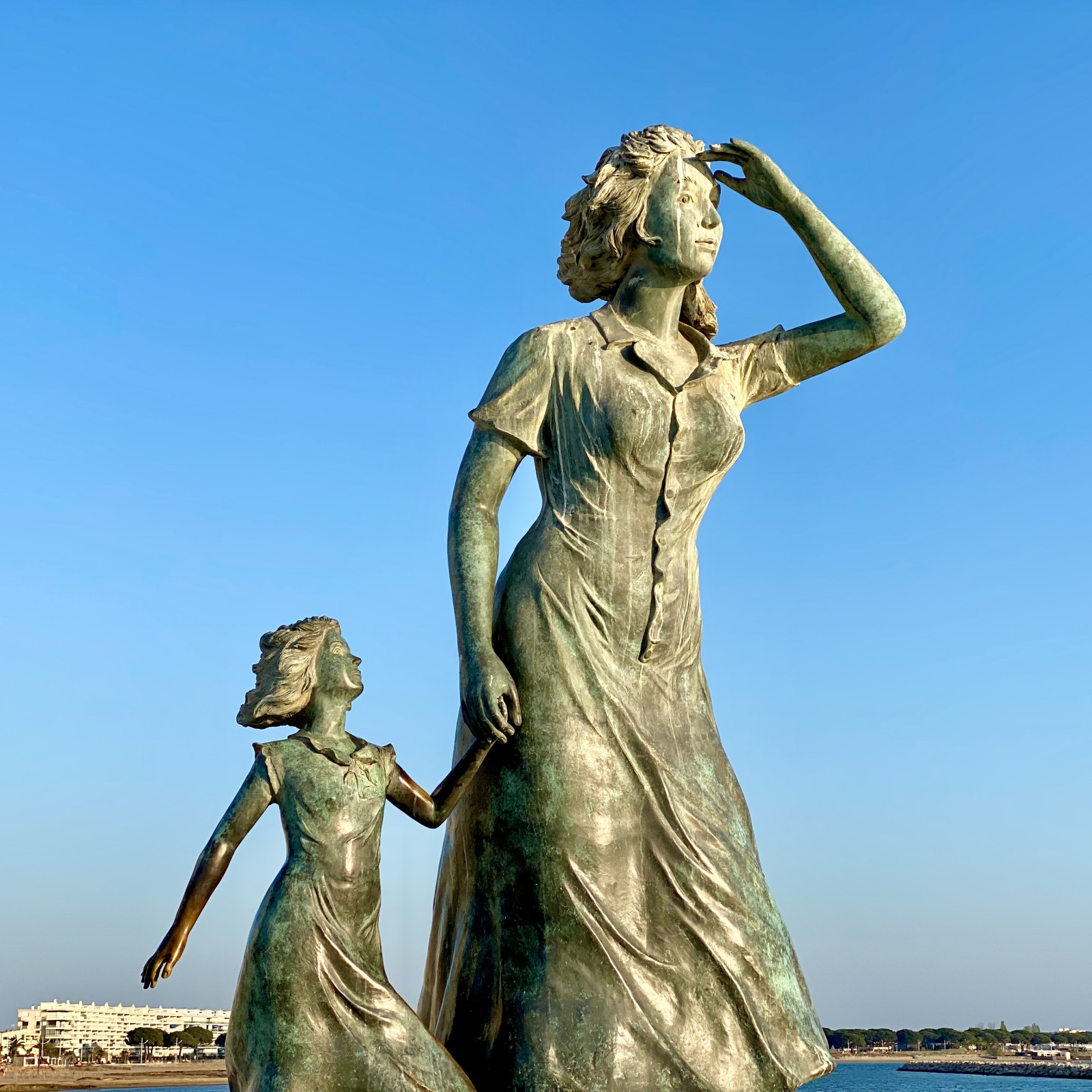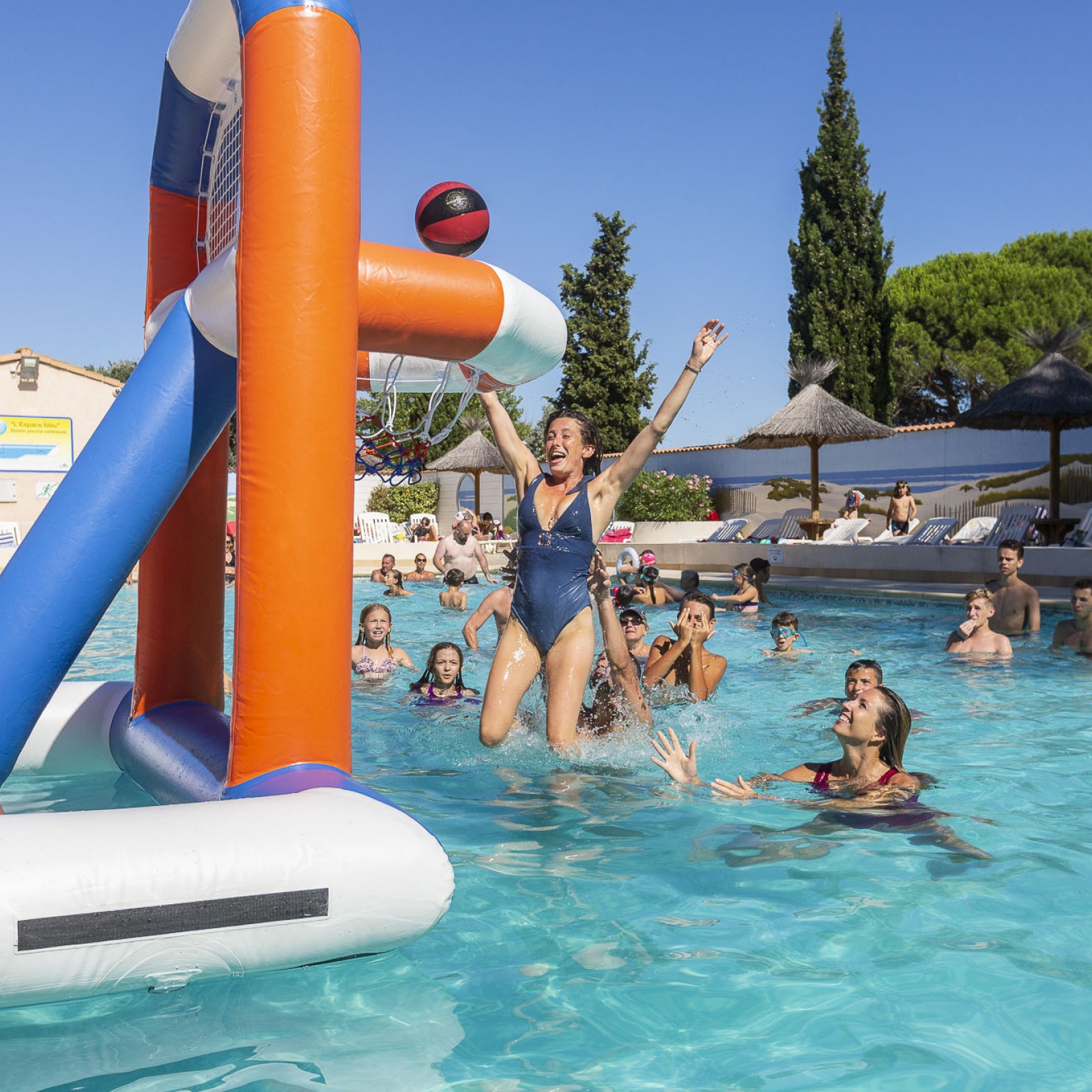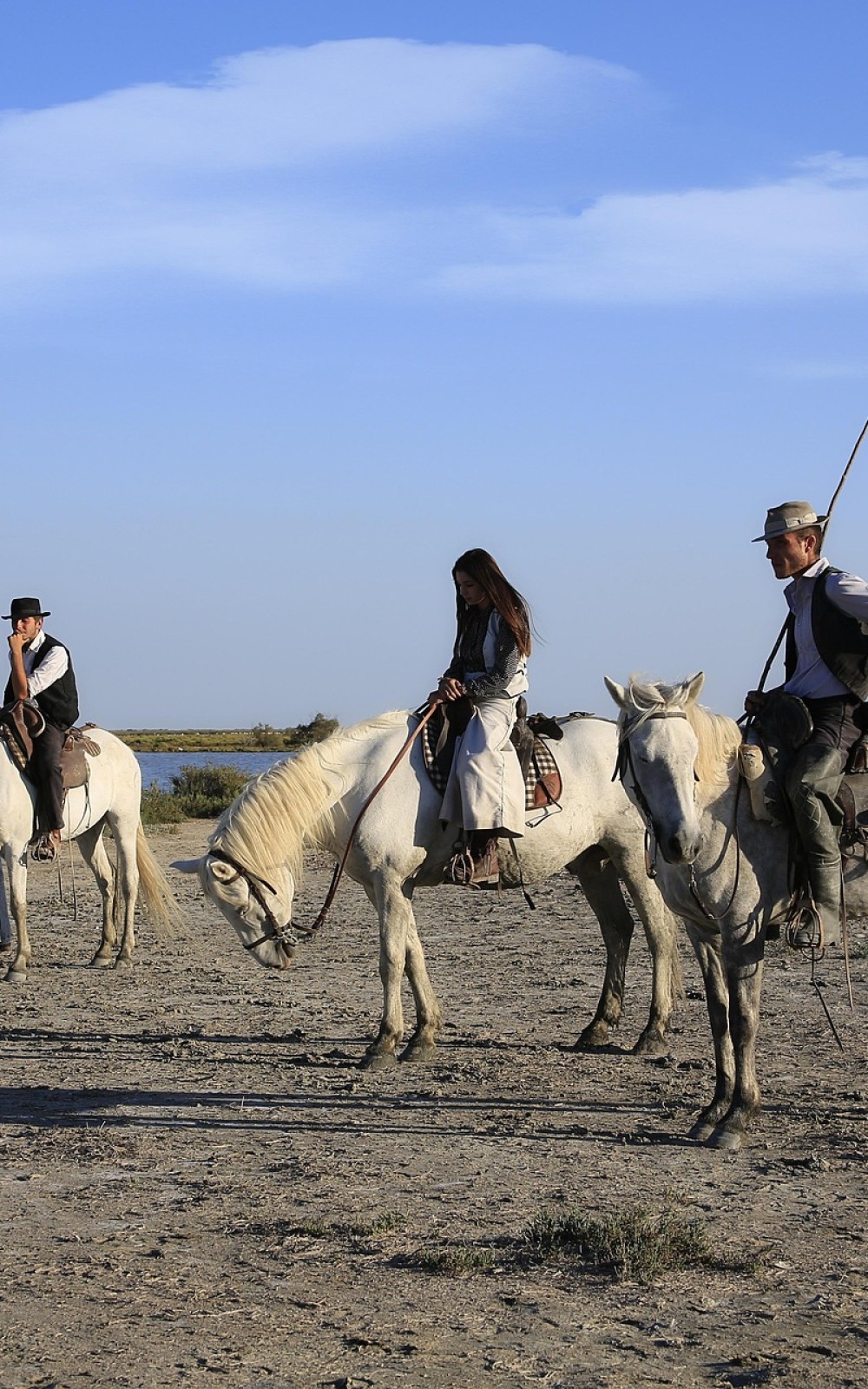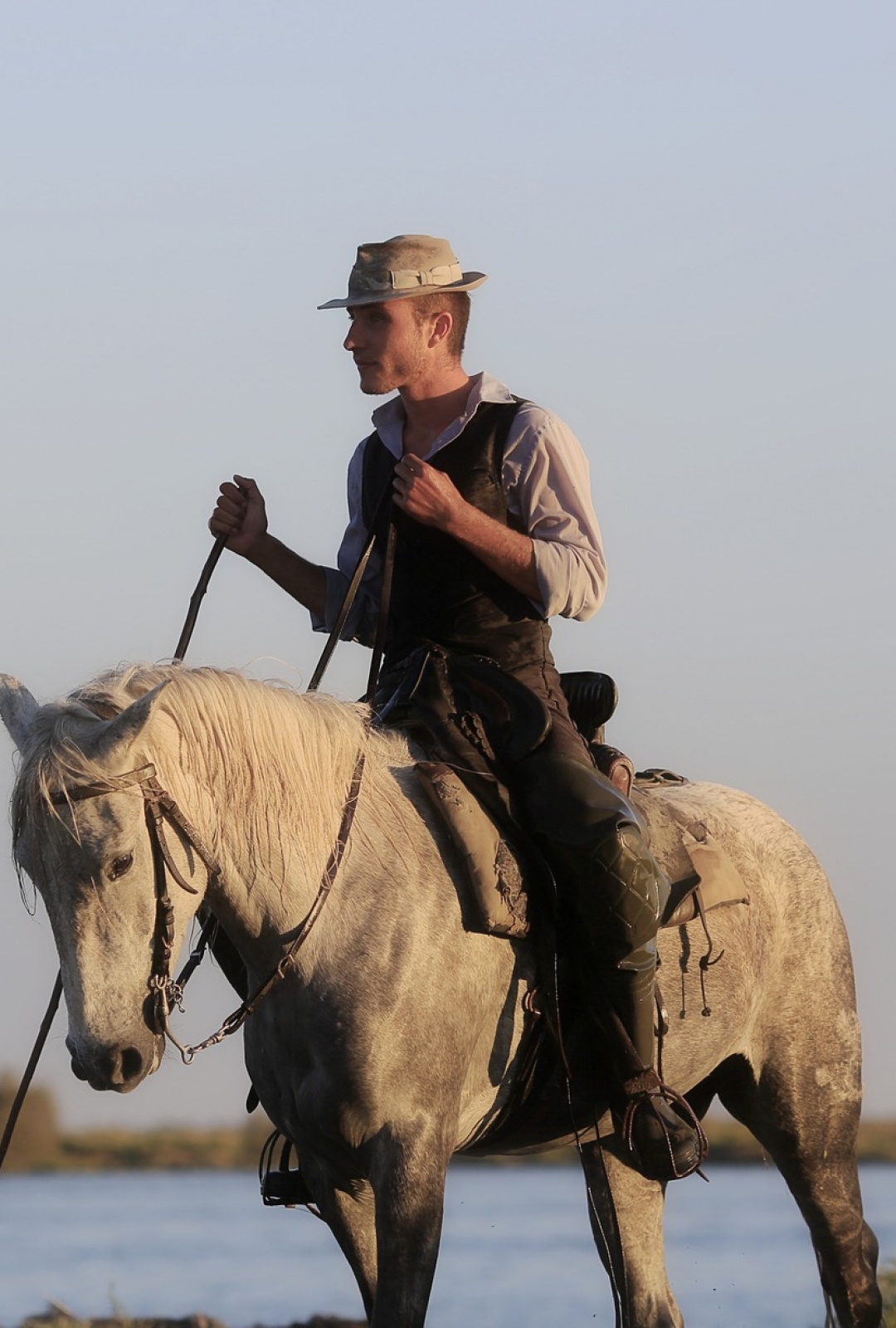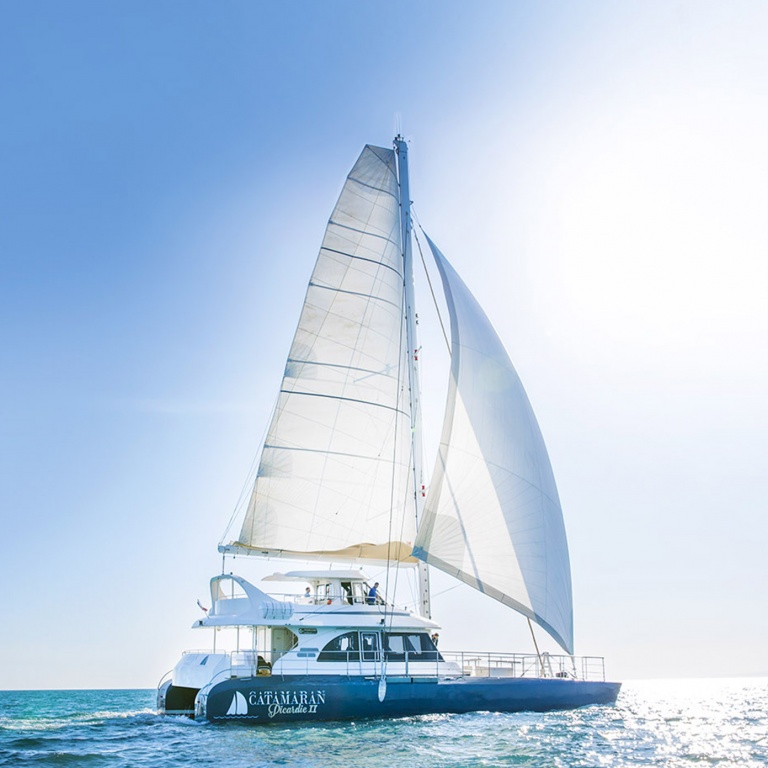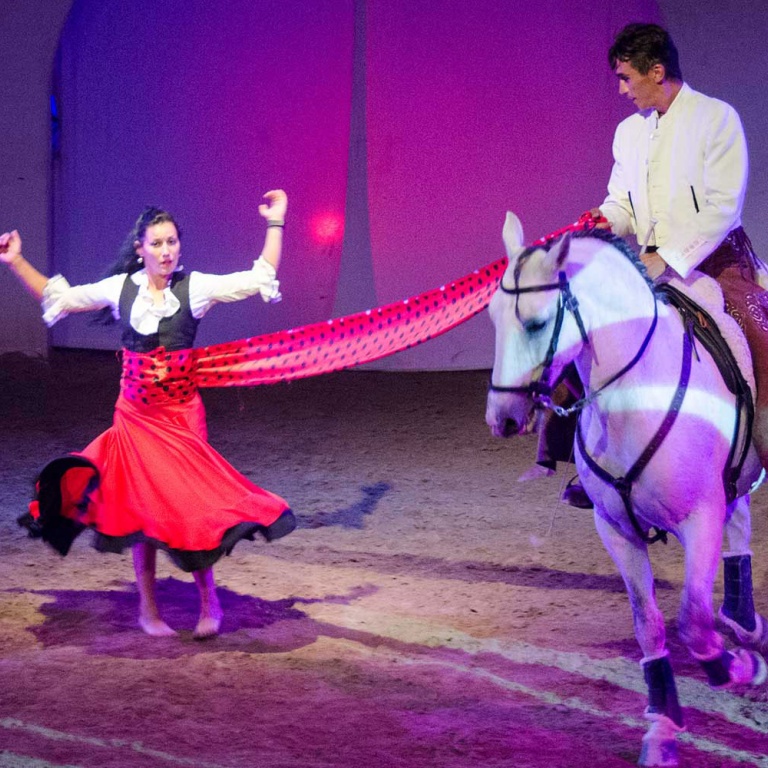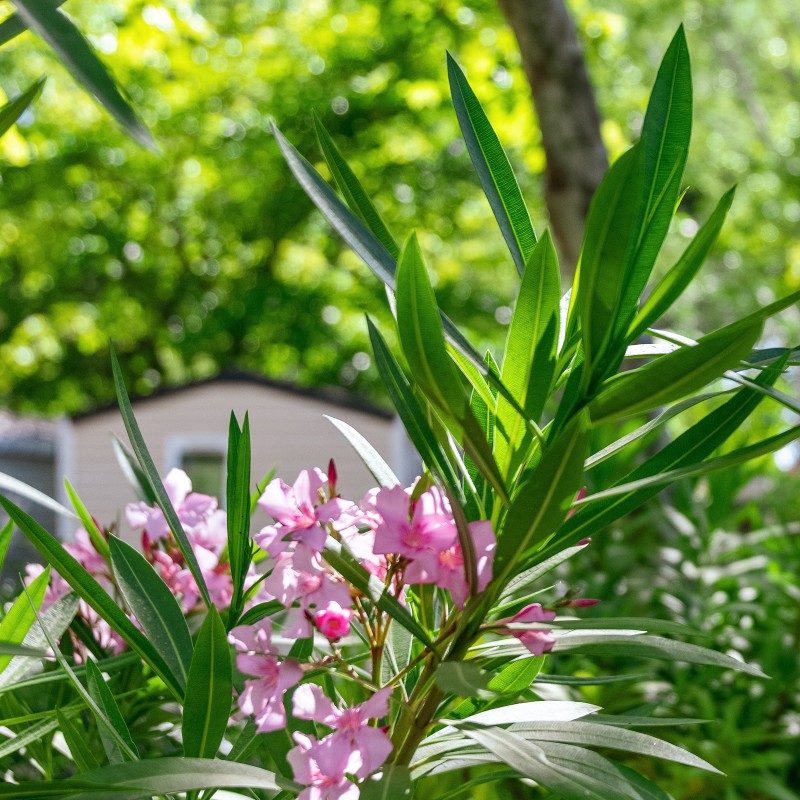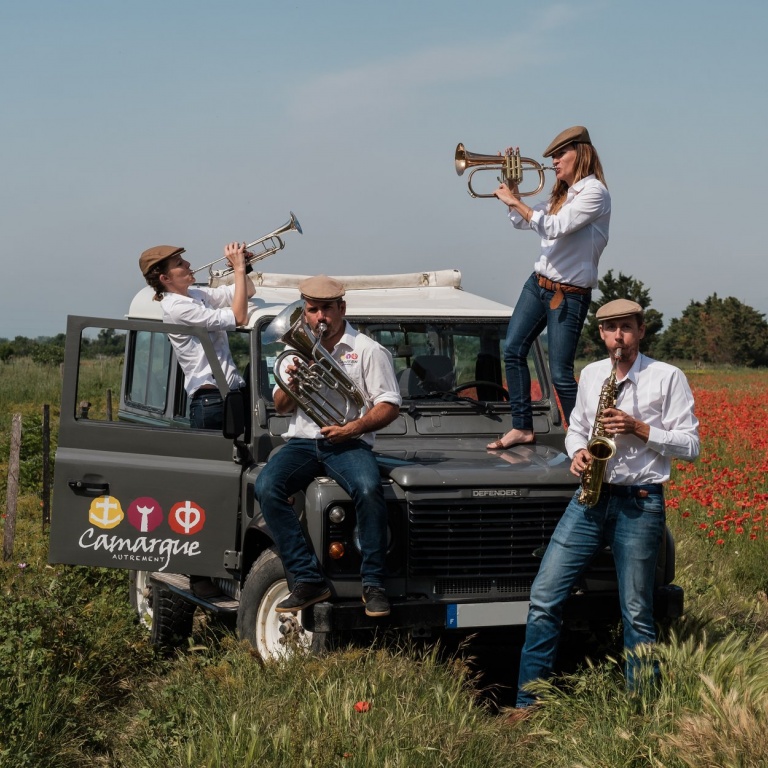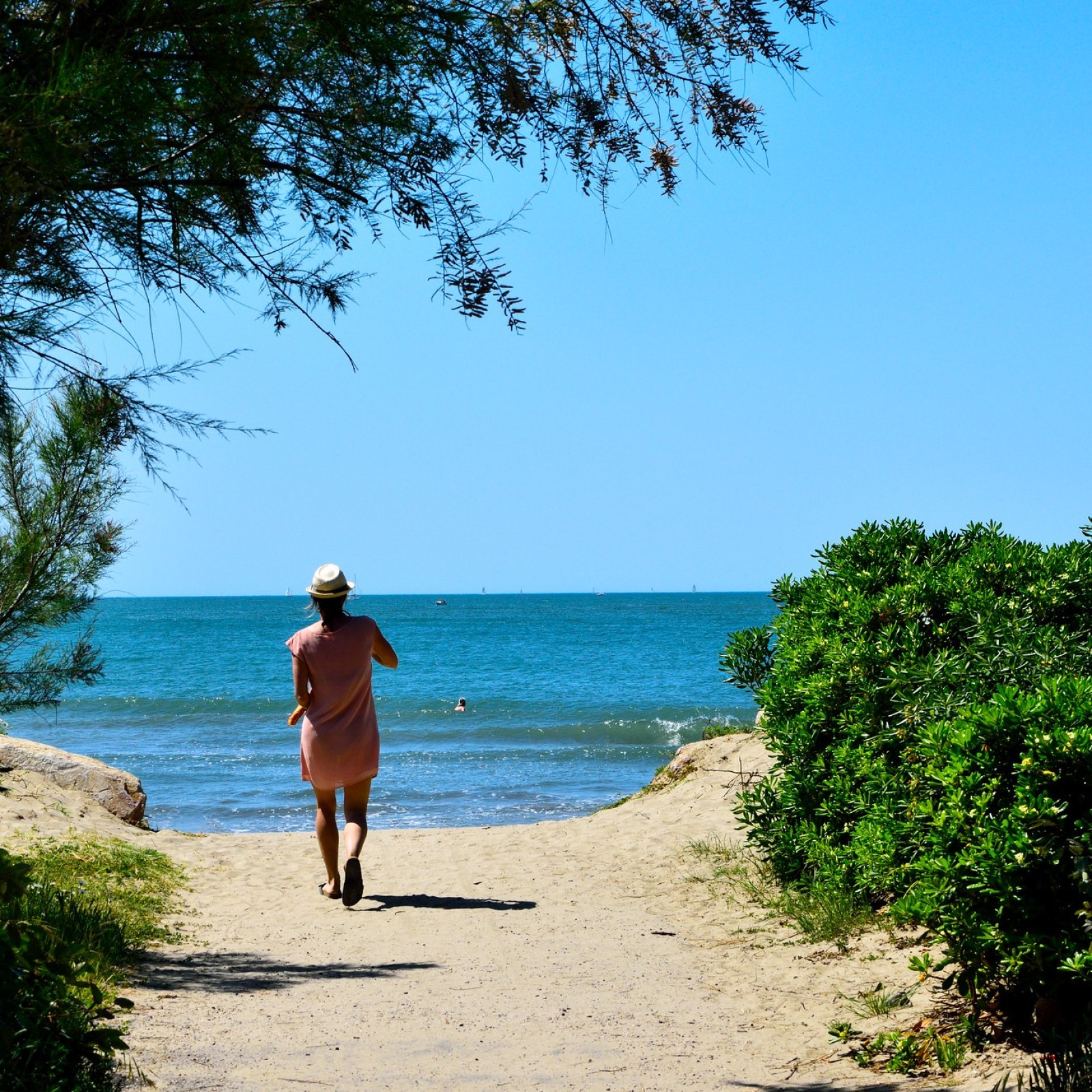
Fauna and Flora
Flora
The richness and uniqueness of the Camargue's flora stems from the dual influence of water and salt. The northern part of the delta is softened by irrigation water, while the southern part is made saltier by the introduction of seawater for salt production. Halophilic plants, which are adapted to salty environments, predominate under these conditions. The most emblematic plant of the Camargue is the salicornia, a small green herbaceous shrub. It particularly likes the salty soil of the salt marshes and changes colour with the seasons, turning green in spring, grey in summer, and reddish in winter. Its fleshy branches store water to reduce the salt concentration in its tissues. Salicornia is edible and can be used as a condiment, macerated in vinegar, or cooked like green beans — hence its nickname, 'sea bean'.
On less salty soils, very rich aquatic vegetation has become established. Sea lavender spreads out like a carpet, colouring the pastures with its soft blue flowers. There are six varieties of sea lavender in the Camargue. It rejects the excess salt absorbed by its leaves. You only have to turn them over to see proof of this. Few trees can withstand the salinity of the soil, but groves of tamarisk can be found throughout the plain. Reeds, also known as 'Provençal cane', grow on the edges of ponds and form windbreaks thanks to their strength. These grow alongside yellow irises, water buttercups, broom and forget-me-nots.
The Pointe de l'Espiguette is full of vegetation typical of dune massifs. There are plants that build dunes, such as marram grass (a grass with elongated spikes) and euphorbia, as well as plants that stabilise them, including sea grape (a small green shrub with red berries), sea holly (also known as blue thistle) and sand lily. The latter flowers in the heart of the dunes in summer and is protected at a national level, as are many other species found in the Camargue, such as small moly garlic and slender forget-me-not.
Birds
The Camargue is located on the migration route between northern Europe and Africa. This makes it an important stopover for many water birds and ducks, and an unrivalled birdwatching site. More than 150,000 birds representing over 250 species pass through or live in the Camargue throughout the year. Birdwatching in the Camargue follows the rhythm of the seasons. During the long, sunny days of spring, migratory birds return from Africa. They stop in the Camargue to rest and feed before continuing their journey to northern Europe. For species that live in the Camargue, the nesting period begins. This is the best time to observe courtship displays and nest-building in preparation for the breeding season that arrives in summer. Around a hundred species of birds nest in the Camargue during the summer. These include ardeids (grey herons and egrets), anatids (ducks and geese), waders (such as snipe, sandpipers, avocets and oystercatchers) and larids (such as gulls and terns). Many birds, such as flamingos, tend to gather in colonies on small islands near the ponds. The trees that were used for nesting now serve as roosts. The young birds begin to fledge and gather together in preparation for the autumn migration. Then comes the time for regrouping. Migratory birds stop off in the Camargue again before spending the winter further south. Many birds come to the Camargue to spend the winter, as living conditions and food availability are better there than in northern European countries. More than 100,000 ducks settle in the Camargue every year.
The flamingo is the species most representative of the Camargue, and is present in the region all year round. During the breeding season in spring, their numbers can reach 30,000. In fact, the Camargue is the only place in Europe where pink flamingos breed. They mainly gather on the Fangassier pond, which is located southeast of the Vaccarès pond. An artificial island was created there in 1970 to compensate for the destruction of natural islands, thus enabling the flamingos to continue breeding in the Camargue. The chicks are born white and then turn grey. Flamingos acquire their beautiful pink plumage at around three to four years of age. This species is distinctive in that it creates nurseries, with groups of chicks looked after by a few adults. Around ten weeks after hatching, the chicks learn to fly. The following autumn, some will undertake their first migration to warmer climes for the winter. Flamingos feed on insects, worms, fish, aquatic plant seeds and rice, which leads to conflicts with rice farmers in the Camargue region. However, their favourite food is Artemia salina, a small crustacean that lives in lagoons and salt marshes. The high carotene content of this crustacean gives the flamingo its beautiful pink plumage. Since the implementation of the Birds Directive in 1979, the greater flamingo has been a fully protected species in Europe. The directive covers the protection of birds, as well as their nests, eggs, and habitats.
The Camargue bull
There are two breeds of bull in the Camargue. The race de biou (its Occitan name) has been present in the region since ancient times. They live in herds of 150–300 on land that is not suitable for cultivation, feeding mainly on reeds and glasswort. They have dark brown coats and their horns point vertically upwards in a lyre shape. The leader of the herd is a castrated bull called a simbeù and wears a redoun, a bell whose sound guides the herd. These bulls are mainly bred to participate in arena games and for their meat. Compared to other breeds of bull, this animal is small and light, which gives it a predominant aptitude for running. The Camargue bull is the only breed of bull in Europe that is still considered wild. According to the 2011 census, there are 20,000 of them. The fighting breed, also known as the brave breed, originates from Spain and was introduced to the Camargue in 1869. With a population of around 6,000, these bulls are raised in herds called ganaderías in the eastern part of the delta and are exclusively intended for bullfighting with killing. However, unlike the Camargue breed, their horns point forward.
Camargue bulls are raised in the wild. From April to November, they feed in the flooded areas of the southern part of the delta, moving up to the non-flooded peripheral areas for the winter. Like foals, one-year-old calves are branded with a hot iron in a process known as ferrade. This enables the breeder to identify their own animals, select families and monitor them, as Camargue livestock is subject to strict controls. It is also an occasion for a big celebration with the herdsmen. Throughout their lives, the bulls have little contact with humans, except for branding, when the herds are gathered for sale, and when the herdsmen check on their health. Sorting the cattle enables the herdsmen to select the animals that will be used in the traditional Camargue bullfighting spectacle, to treat them, or to take them to the slaughterhouse. This is a delicate task that requires herdsmen to be highly skilled at riding horses in order to separate the animals smoothly and without injuring them. Bulls that are unsuitable for arena games are destined for consumption; their meat is dark red and lean, similar to game meat. Since 1996, bull meat has been awarded an Appellation d'Origine Contrôlée label. It is frequently used in traditional Camargue recipes, such as gardiane (a stew).
